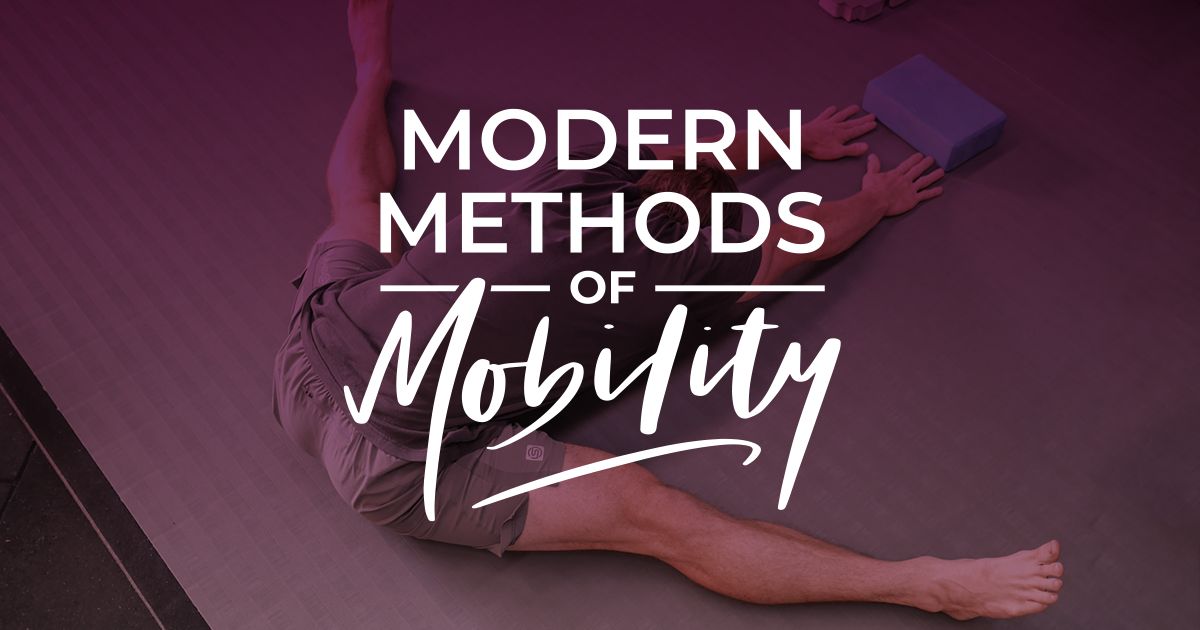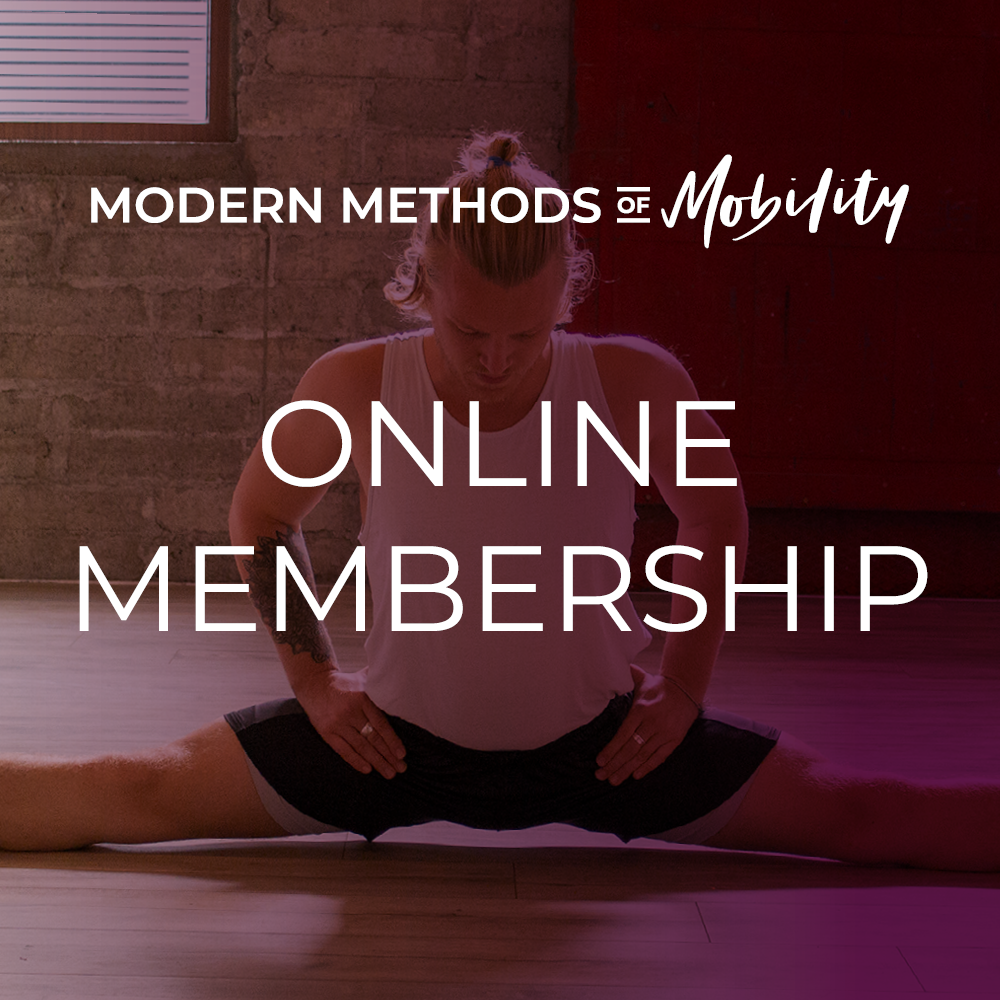The Modern Methods of Mobility system started with a simple question. “Why am I not getting results from my flexibility training? “ This is a question Emmet Louis, the system creator, posed to himself during his time in circus school. The advice he was receiving at the time was to stretch more and, if that didn’t work, to stretch even more leading to twice daily stretching sessions, multiple stretches per muscle group, and holding stretches for longer when possible. All this led to stagnation and regression in range of motion.
In the flexibility methods he encountered during this period, there was no rhyme or reason to the suggested approach, no real assessments of the person, their flexibility type or capabilities. Basically, it seemed like a one size fits all approach when in fact, it just didn’t fit in many cases. Emmet at that stage had started to research strength and conditioning and found that there was a world of both science and practical, in the trenches methods of getting a person stronger in the context of their chosen activity when it came to strength training. However, this seemed lacking in flexibility development particularly in relation to adults. At the time, there was no confident method you could find that could almost guarantee success, unlike what we find in strength training.
So Emmet set out to solve this problem. He wanted to create a system that, at its core, would have a set of foundational principles that apply in all cases for range of motion development, and then explore these principles and their application across a broad spectrum of the population and their levels. Now, having spent ten years working with everyone from professional circus artists, athletes, martial artists, dancers, as well as dedicated practitioners from ages 16 to 60, he has formalised a set of principles that apply in all cases and, more importantly, can be taught and replicated by others.
Seeing the Big Picture of Flexibility Training
One of the issues of developing range of motion as an adult is that there is so much conflicting information about flexibility training out there. If you look closely you’ll find success cases and failures of all methods. So we need to zoom out and take a bigger picture view of flexibility development. It closely follows the bio psycho social model in that:
- We need a method of respecting the biology of the person and their current capabilities, assessing their current range of motion in the three main flexibility attributes, passive, active, static active and dynamic, and finding the limitations there. We also need to find the individuals limits set by genetics or bone structure. Based on this, we then need to find the type of flexibility methods they respond to.
- We need a way of addressing the beliefs of the person in regards to what they think about flexibility. Do they know how to confidently approach the training and techniques used, do they believe they can successfully develop their range or have they been told some nonsense like only children can get flexible? (as a side note, Emmet has been told this by multiple highly regarded coaches in a number of disciplines).
- We need to address the social side of things. What are the expectations of the environment the individual trains in, and what value the social or activity group puts on range of motion as a physical attribute.
The Principles Underlying the M3 System
The system is based around 7 key principles that come together to form the framework of the methodology.

Gravity
The first principle of the method is the principle of gravity and how the three relationships with gravity in a range of motion development interplay both in the micro and macro level. Once these three relationships can be assessed then a map of limitations for a persons range of motion can be made.
Tasking
Principle number two developed from watching and observing disciplines that require high degrees of flexibility and how they use their flexibility and extreme ranges in action. This lead to the discovery that a huge amount of the developmental work is done outside of the context of the flexibility training itself, but rather within the actual application of the respective disciplines, which can be categorised as task based environments. This led to what we believe to be the first adoption of the meta theory framework of Activity Theory being applied to flexibility development. This essentially means that we can not separate the actor from their environment and the tasks. This led to the concept of task based exercises in the system as a means to educate the body on how to display its flexibility.
Seeds
The next principle is that human bodies can only move in certain manners and all advanced motions at their heart are rooted in simpler iterations. Judging that we have a limited number of ways the body can move, we can ascertain certain key starting positions, or seed positions as we call them. These seed positions then grow into more advanced positions as the person develops.
Velocity
Using velocity as a stimulus for flexibility is one of our other key principles. While not a new concept to the practitioners of various martial arts around the world, this idea is missing or hidden in a lot of other disciplines. Being able to distill this as a trainable quality and one of the factors that can be used to further develop the potential of the student was a key step to breaking the flexible but slow idea that gets touted in some quarters.
Layering
The next principle of layering different methods came via an eureka moment while Emmet was trying to make programs that take less time to complete by the student or client. By playing with various combinations he noticed that certain combinations and layering of exercises gave more potent results. A lot of experimentation later, this principle seems to be universal.
Simple
The method has to be practical. One of the key things for getting results is understanding that the nervous system hides its complexity under simple interfaces. This means the method should be simple to implement, not requiring long tuition on the exercises or complex equipment.
Time
And lastly, the forgotten element. Time. Everyone wants quick results, but what are quick results in flexibility development? By observing how long it takes to get results that are near permanent we added the 18 month rule. Train consistently for 18 months following a program based on the above principles that is appropriate for your level and adjusted as you progress, and you won’t be disappointed.
The key aspect we are looking for is that the flexibility training will also enhance and support your current physical practices in a synergistic manner. How flexibility training works in tandem with other strength training and conditioning variables is a topic that is very under researched. Over the last ten years Emmet has been experimenting and working on this topic, trying to offer clarity on how to create effective development in all facets at the same time, and understanding how all the various parameters work together.
The M3 flexibility syllabus is comprehensive enough and adaptable enough to be used by everyone ranging from Dancers to Field Sport athletes, and everyone in between.
The Three Aspects of Flexibility
In the system we look at three main flexibility aspects, passive, active, and dynamic, as well as various subtypes of these.
Passive flexibility is the range of motion the body can display using either gravity or external assistance to achieve the position. Passive flexibility is generally considered the mother variable of flexibility
Active flexibility is using the muscles that are involved in the stretch, hence we are actively controlling the body’s capability to enter or exit the flexibility position we need.
Dynamic flexibility is moving the body in and out of positions, either open or closed chain.
Each of these three aspects have numerous techniques that we teach to aid aid in their development. Combined with our assessment system of finding where the deficits or undertrained aspects of the individual’s flexibility are, we can make an effective program that targets even one of these aspects, and by addressing this we will increase the other aspects at the same time.
The Method in Application
One of the strong points of the Method is that it can function as a standalone system of flexibility development or that it can be successfully integrated with a more comprehensive movement discipline and/or a strength and conditioning program.


